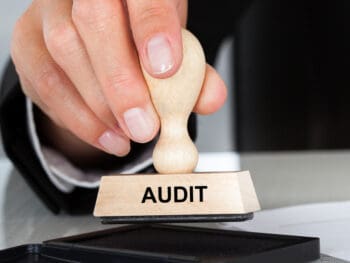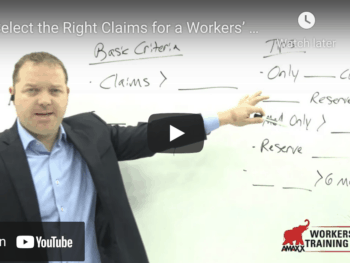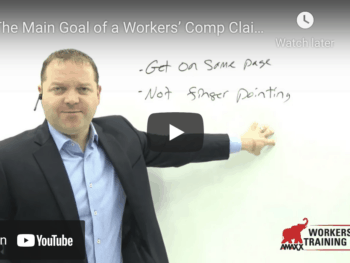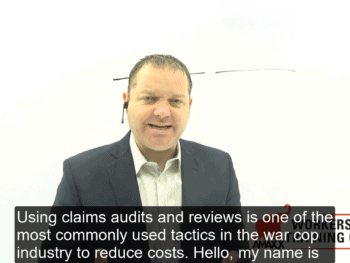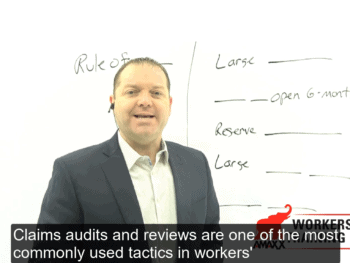
Specific Issues A Claims Audit Can Address:
To properly set the criteria for a claim file audit, you need to identify the objectives of the claims audit. The objectives for the audit should address the issue(s) you have been encountering with the claims office. Do you have a general concern about the overall claims handling quality, or do you have a specific issue(s) that need to be addressed? Examples of specific issues a claims audit can address include:
• Identifying sources of leakage
• Compliance with your service contract
• Overall claim costs
• Timeliness of three-point (initial contacts)
• Correct compensability decisions
• Appropriateness of reserves
• The proper identification and handling of subrogation
• Proper medical management
• Proper litigation management
• Timeliness of total claims handling
• Timeliness of claim closings
• Compliance with state mandatory form filings
• Data accuracy
Non-Claim Specific Criteria
The root causes of claim handling problems are often in the claims office but outside of the claim files. Non-claim-specific criteria can be included in the claims audit when requested. The independent claims auditor should be capable of providing a complete assessment of the claims office. This would include:
• An evaluation of the organization’s claim structure, job descriptions, staffing, and information technology systems
• An evaluation of the workload, including the total number of claims and the type of claims being handled by each adjuster
• An evaluation of the workload of each supervisor
• An evaluation of the closing ratio (the number of claims closed each month versus the number of new claims assigned during the same month)
• An evaluation of the financial controls in place to prevent overpayments, duplicate payments, or misappropriation of funds
• An evaluation of the reserving worksheets and the accuracy of their use
• An evaluation of the reinsurance reporting procedures and tracking procedures
Before engaging an independent claims auditor, a discussion should be had with the auditor to discuss what documents or information can be provided. The claims auditor may need to review the claim management system, the client service agreement/claim handling instructions, the Customer Service Guide, the loss runs, and/or the claims office’s published Best Practices. This allows the claims auditor to accurately assess what is happening in the claims office against what is expected.
Determine Claims Files To Review
Once you have identified the criteria for your audit and reviewed with the claims auditor the information available to assist and support the claims audit, the next step is to determine the claim files to be selected for review. The selection of claim files that do not address your concerns and do not match your criteria will negatively impact the audit results. For example:
• You want to know the current quality of the claim handling – a selection of new indemnity claims, open a month to three months will provide you with much greater insight into the recent claim handling quality than reviewing files open one to three years.
• You want to know if the reserving practices of the adjusters are negatively impacting your financial position – a selection of the indemnity claims with the highest reserves would provide a clearer picture than a random selection of claim files
• You want to identify sources of leakage – a broad selection of new, medium-aged, and legacy files should be reviewed.
The independent claims auditor will guide you on the file selection criteria that will give you the most information to address your audit concerns.
For more information on claim file audits, please contact us.
Author Rebecca Shafer, JD, President of Amaxx Risk Solutions, Inc., is a national expert in workers’ compensation. She is a writer, speaker, and publisher. Her expertise is working with employers to reduce workers’ compensation costs, and her clients include airlines, healthcare, printing/publishing, pharmaceuticals, retail, hospitality, and manufacturing. She is the author of the #1 selling book on cost containment, Workers Compensation Management Program: Reduce Costs 20% to 50%. Contact:RShafer@ReduceYourWorkersComp.com.

Contact: mstack@reduceyourworkerscomp.com.
Workers’ Comp Roundup Blog: https://blog.reduceyourworkerscomp.com/
©2021 Amaxx LLC. All rights reserved under International Copyright Law.
Do not use this information without independent verification. All state laws vary. You should consult with your insurance broker, attorney, or qualified professional.







